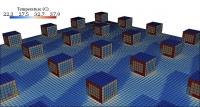 Just when everyone thought that McDonald’s can never be green, the giant in hamburger making yet again proved us all wrong. Not only that the logos and roofs of most restaurants (in Europe at least) have turned from red to green, but also there is an increasing number of facilities that are collecting LEED points with their solar panels and charging stations.
Just when everyone thought that McDonald’s can never be green, the giant in hamburger making yet again proved us all wrong. Not only that the logos and roofs of most restaurants (in Europe at least) have turned from red to green, but also there is an increasing number of facilities that are collecting LEED points with their solar panels and charging stations.
McDonald’s is one of these companies, like Coca-Cola, that are a constant subject of attack. Their products have been accused for being the reason for increased obesity and regardless of how many salads appear on the menu, the big ‘M’ will most probably still end up on many people’s no-go lists. This of course meant that the company had to make a change in their business strategy if they were to make it, especially since more and more people have become aware and are switching to a green and healthy lifestyle.
With this in mind, the first ever LEED-certified McDonald’s appeared in North Carolina, back in 2009, and another one followed in November 2013. These facilities have on-site solar canopy, supplying power directly to the restaurants, a composting of waste and recycling of oil technology, dual charging stations, water efficient restrooms and kitchens and drought tolerant landscape plants. Another aspect that helped the restaurants receive their LEED certification was the fact that most of the building materials used for the construction were taken from the old buildings, which were demolished.
But this is not all. The customers, who walk in the restaurants, can watch a full demonstration of how PV systems work, while a board displays the actual numbers that indicate energy consumption at any precise moment. Short education videos are played on the background, showing how various green systems function, including recycling, LED lighting, water panels and porous pavers, all technologies that can be seen at the facilities.
These two restaurants are part of a much bigger initiative that the company has taken up, aiming to build a total of 25 LEED restaurants in the coming two years. It is clear that this is a very smart marketing strategy aiming to restore the fate in old and attract new eco-conscious customers. I do believe, however, that they will have to do a lot more than constructing a green building and announcing that some day day will be using 100% sustainable beef.
The most important feature of a restaurant is the food they serve. Unless they bring in local produce and can guarantee good quality, 100% natural ingredients, they will not be able to bring me in their franchise, but I guess the strategy might work on others.
Image (c) McDonald’s Advantage

































